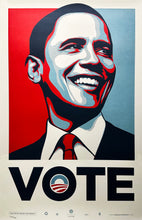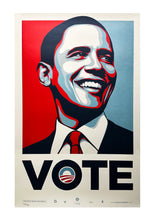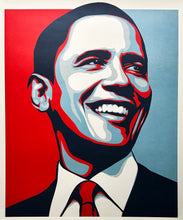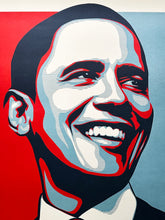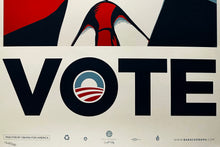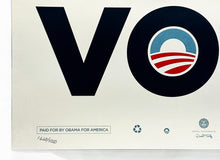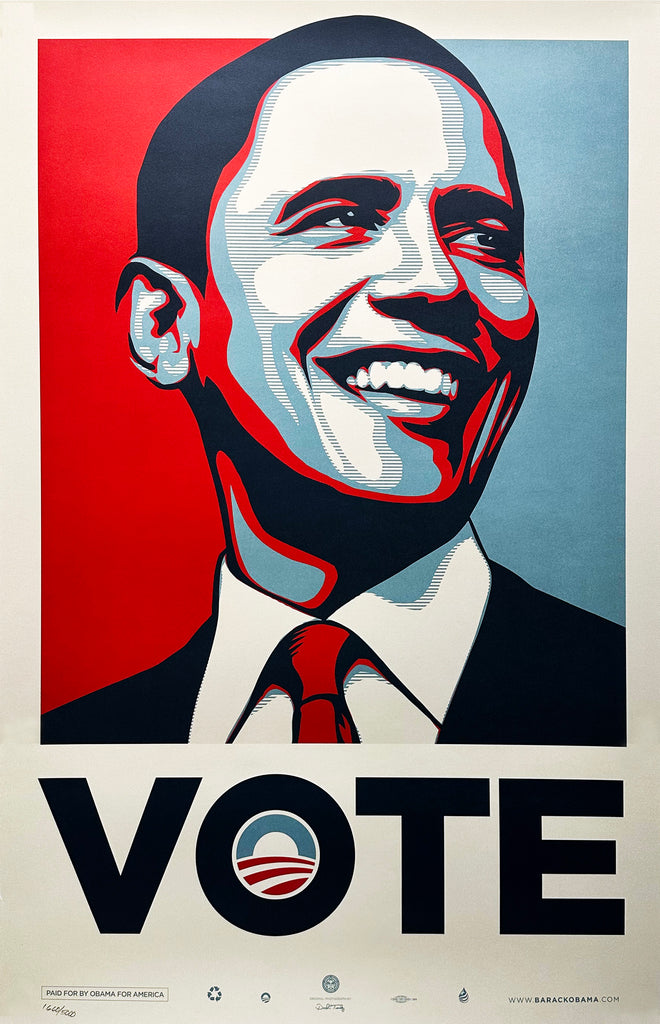'VOTE' by Shepard Fairey, 2008
38.5 x 25 Inches
101 x 66 Centimeters
Archival pigment print on 330gsm fine art matte paper.
Limited Edition of 5000 (#1666/5000)
Hand-numbered in pencil bottom left.
*Note: Overall very good-excellent original condition.
ABOUT THE ART
A portrait created by a graphic designer ended up becoming the icon for the Obama campaign and an international phenomenon.
To show his support for Barack Obama, Los Angeles-based graphic designer Shepard Fairey created a large-scale, red, white and blue collage of the President-elect. From there, Hope, as he calls it, went viral. He printed posters and stickers of the portrait, and ardent Obama supporters tagged them on city buildings and car bumpers. He put a downloadable version of the design on the web, and others snagged it for t-shirts and signs.
Literally, Hope has become the most recognizable image of the campaign, so much so that spoofs have cropped up with the faces of John McCain and Sarah Palin and words other than “hope”—like “nope”—on them. Time magazine commissioned a similar portrait from Fairey for its 2008 Person of the Year cover this past December. Washington, D.C. art collectors Heather and Tony Podesta recently donated Fairey’s original 60-by-44-inch collage to the Smithsonian’s National Portrait Gallery, where it will be on display starting January 17. Fairey spoke with Smithsonian.com about his work.
"I’ve never really considered myself just a street artist. I consider myself a populist. I want to put my work in front of people by many different means; the street is one aspect. Commercial projects are another aspect -- T-shirts, album packaging. Art shows and the institutions end up being the couriers for culture for the next generation and are an important component as well. It may seem ironic from one perspective, but I think if you look at my overall strategy, it’s actually not out of step. To me, to be validated by the Smithsonian is only possible because the grass roots populist efforts I made resonated to such a degree."
- Shepard







